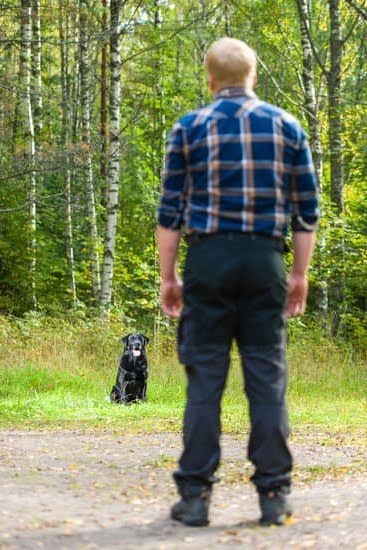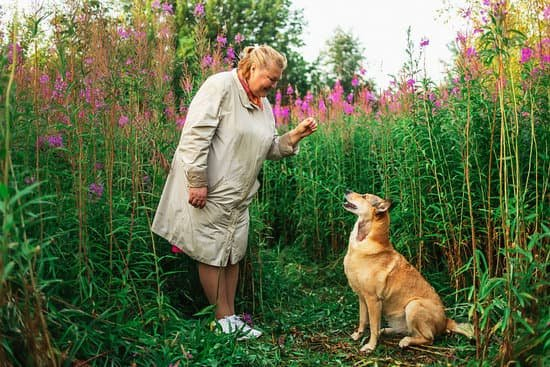Introduction
Training your dog to walk with a leash is an important part of being a responsible pet owner. Not only does it help ensure the safety of your dog, but it also provides them with the opportunity to engage in positive socialization that will benefit them throughout their lives.
Leash training is also beneficial for you as the handler in that it decreases the risk of your dog becoming injured or put in harm’s way and allows you to safely control their behavior while out and about in public places. Altogether, this makes leash-walking an invaluable activity that can greatly improve your relationship with your pup and make spending time outdoors enjoyable for the both of you.
Here are some tips on how to properly train your wondering pup: Start by finding the appropriate type of leash and collar for your particular breed size and temperament. A harness or head collar is usually best for larger breeds and puppies. Spend some time familiarizing yourself (and them!) with having something attached around their neck by practicing at home first – have fun playing tug-of-war or hide-and-seek games with a lightly filled backpack attached around them. If using a standard collar, always check that it’s not too tight before heading out – no one should be uncomfortable while taking a stroll!
Next, when venturing outdoors on walks begin slow – start by just walking around the block once before eventually building up to longer distances as they become more accustomed to their newly acquired accessory and practice things like “heel” or “stay” commands while at it. Always use positive reinforcement like treats or verbal praise when they do something correctly; fear based tactics are not effective when teaching leash manners! Over time, eventually both parties will become confident out exploring around town together knowing what to expect from each other each step along the way.
Preparation for Training
Before training your dog to walk with a leash, you will need to acquire a few important materials. Firstly, you will have to select the right leash for your pup. Consider things like length of leash, material of the leash (nylon or leather are popular choices) and size of the handle. The handle should fit comfortably in your hand since it is the main point of contact between you and your pet. It is also important to pick a leash with adjustable sizing so that it can fit different breeds and sizes of dogs. Additionally, if you own a smaller breed or puppy, an adjustable strap will make sure that it does not get too tight or cause discomfort for your pet. You may also wish to purchase a collar for your pup if it does not already come equipped with one. This can be helpful because their collar coupled with the leash will give you more control over them during their walks. Finally, treats can be used as rewards while they learn how to properly use the leash.
Establishing Rewards and Consequences
Establishing rewards and consequences are important when it comes to training your dog to walk with a leash. Training a dog to walk with a leash is going to take time and patience and rewarding them when they get it right will help speed up the learning process. You can reward with verbal praise such as “good boy!”, treats, playtime or even walks themselves – whatever your pup finds motivating. This helps show them that walking on a leash is desirable behavior for them.
On the other hand, you want to be careful not to yell or punish your pup if they make mistakes. Instead, reinstate the correct command and give treats for correct behavior. If your pup stops responding to rewards then back up until you find something that works for them again. Setting clear rewards and appropriate consequences in a positive way will go a long way in helping you train your pup successfully!
Step-by-Step Training Guide
One of the most important tasks for any new pet owner is teaching a dog to walk with a leash. It not only keeps both you and your pup safe, but also prevents them from causing mayhem on their daily walks. To get started, here is a step-by-step guide for training your four-legged companion to be comfortable wearing a leash and walking by your side.
Safety Considerations: It’s important to start by introducing your dog to the concept of wearing a collar and leash. Allow them to explore it with their nose and become familiar with the feel of the material against their skin; then practice fastening and unfastening it around their neck in small steps so they don’t become overwhelmed or scared. It may also be beneficial to walk your dog without a leash at first, until they have gotten used to being around you when outdoors.
Cues and Commands: Once you have completed these foundational steps, it’s time to teach them how to properly walk in sync with you while wearing the leash. Begin by setting gentle cues or commands while walking side-by-side such as “heel” or “with me” along with verbal praise when they pay attention and stay at your side. Lifting up gently on the leash can provide further guidance if needed — never jerking on it or tugging them forcefully into submission; instead create the message that this is somewhere our two paths cross together in harmony. With consistency and patience, with time you will create an unbreakable bond between you and your furry friend!
Adapting the Training Plan: No two dogs are exactly alike so it is important to be aware of individual temperaments before starting this training plan. Some may take longer than others, so don’t rush it! Adaptation must occur depending on things like energy levels, size, breed type etc.. Additional tools like treats or toys can help keep their attention focused during this lesson if needed; likewise rewards after walks are always welcome! Above all else remember that positive reinforcement goes a long way when educating any pup — reward successes no matter how small!
Tips and Strategies
It is important to make sure that your training sessions with your dog to walk with a leash are both fun and effective. To ensure success, you must use positive reinforcement and rewards to teach your dog the desired behavior. Constant reinforcement will also help your pup to remember what they have learned and motivate them to keep practicing.
An important factor in training a dog how to walk on a leash is proper equipment. The right collar or harness can help reduce pulling for heavy or large dogs, distribute pressure more evenly, and provide better control when needed. Loose-fitting collars can be easier for young puppies or small breeds to wear; however, strong dogs may need a more secure fit. Additionally, there should always be slack in the leash so your pup has enough space to explore but not stray too far away from you.
When starting off with leash training sessions, it is best to pick an area with few distractions such as indoors or a quiet neighborhood street. Start by allowing your pup enough slack on the leash and gently guide them along by rewarding good behaviors such as remaining by your side or responding quickly when called to heel. You will also want to practice changing direction frequently during walks as this helps reinforce the idea that you are making decisions as well as teaching them not to pull on the lead.
In addition, make sure that you are rewarding good behaviors during each session with praise and treats so that leashing up becomes associated with something positive rather than negative. Repetition of these techniques over time until you find success can bring about rapid progress in teaching an effective loose-leash walking skill!
Troubleshooting
When training your dog to walk with a leash, the most common issue is that your pup may try and pull on their leash. This can occur when they are excited or trying to go fast in the wrong direction. In order to combat this, it is important to quickly act to correct their behavior and guide them back on track using the leash as an anchor. You can also focus on calling their attention forward rather than merely pulling them in right away. It is also important to try and remain consistent in your commands and movements; this will help build trust with your pup that you always know where you’re going, which will make them less likely to pull in the other direction. If your dog starts showing signs of being stubborn, such as slowing down or not responding at all, give them some extra time with positive reinforcement like treats or plenty of praises. Finally, it is essential to be aware of changing environments such as weather conditions, people walking past, or certain scents that could distract your pup from what you’re teaching them. Taking mental notes of any situations like these could help you adjust and adapt your training plan moving forward for more successful results.
Conclusion
At the conclusion of training, it is important to reinforce the importance of the lessons presented and recognize the progress that has been made. Walking on a leash is a skill that requires time to learn and regular practice for mastery. It can help build trust between you and your dog, as well as make walks together more enjoyable. In order to successfully train a dog to walk with a leash, you should begin slowly, set expectations for your pet, reward positive behaviors, correct bad behavior swiftly and consistently, pay attention to the physical cues of your animal and stay patient regardless of setbacks in learning.
For further help or guidance with this training process there are wonderful resources available like books from trained experts, classes in obedience offered by local veterinarians or trainers, online instructional videos, as well as ready advice from friends who have had experience with their own dogs. A little patience and dedication pays off with a happy pup that appreciates being out in the fresh air walking alongside you!

Welcome to the blog! I am a professional dog trainer and have been working with dogs for many years. In this blog, I will be discussing various topics related to dog training, including tips, tricks, and advice. I hope you find this information helpful and informative. Thanks for reading!





